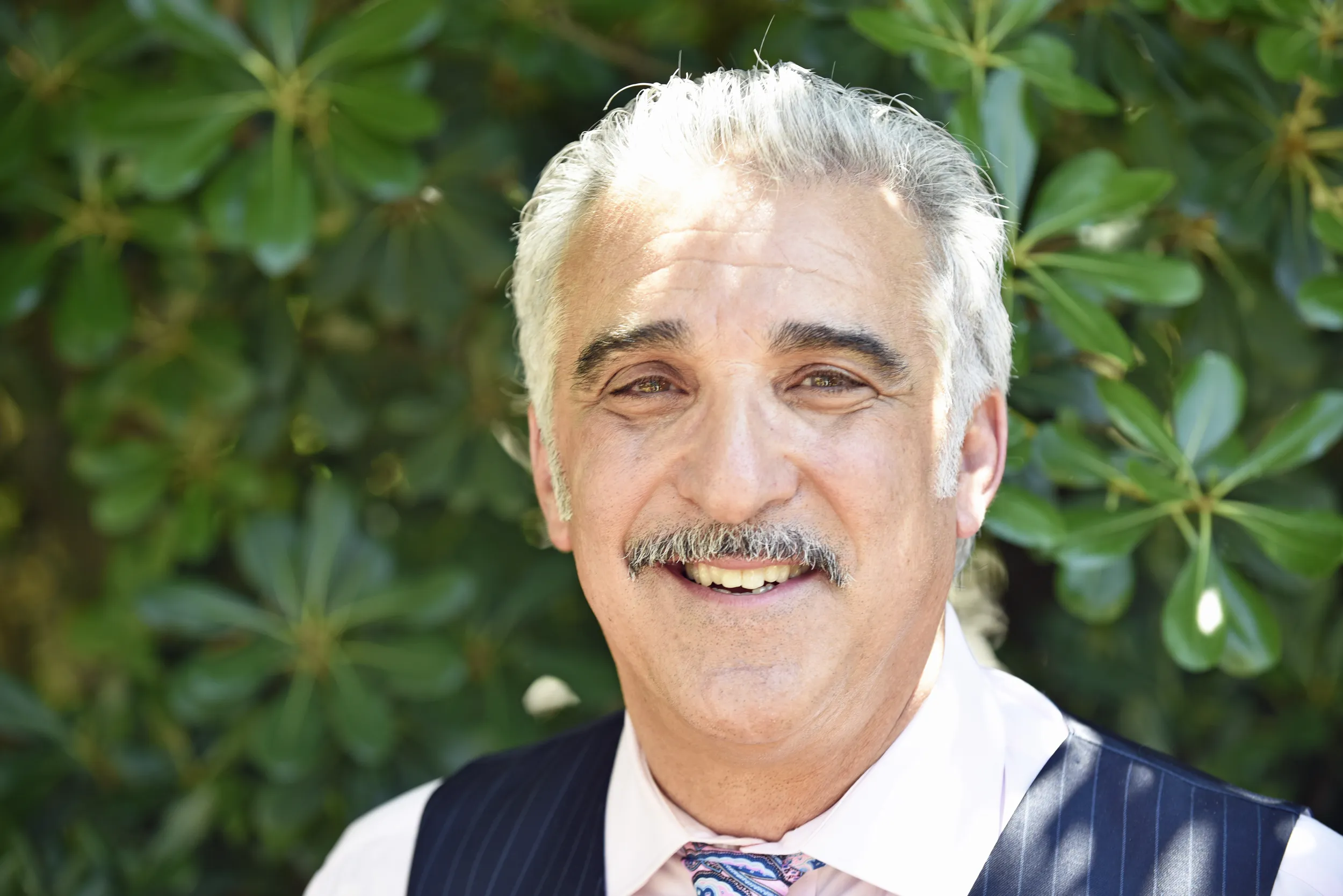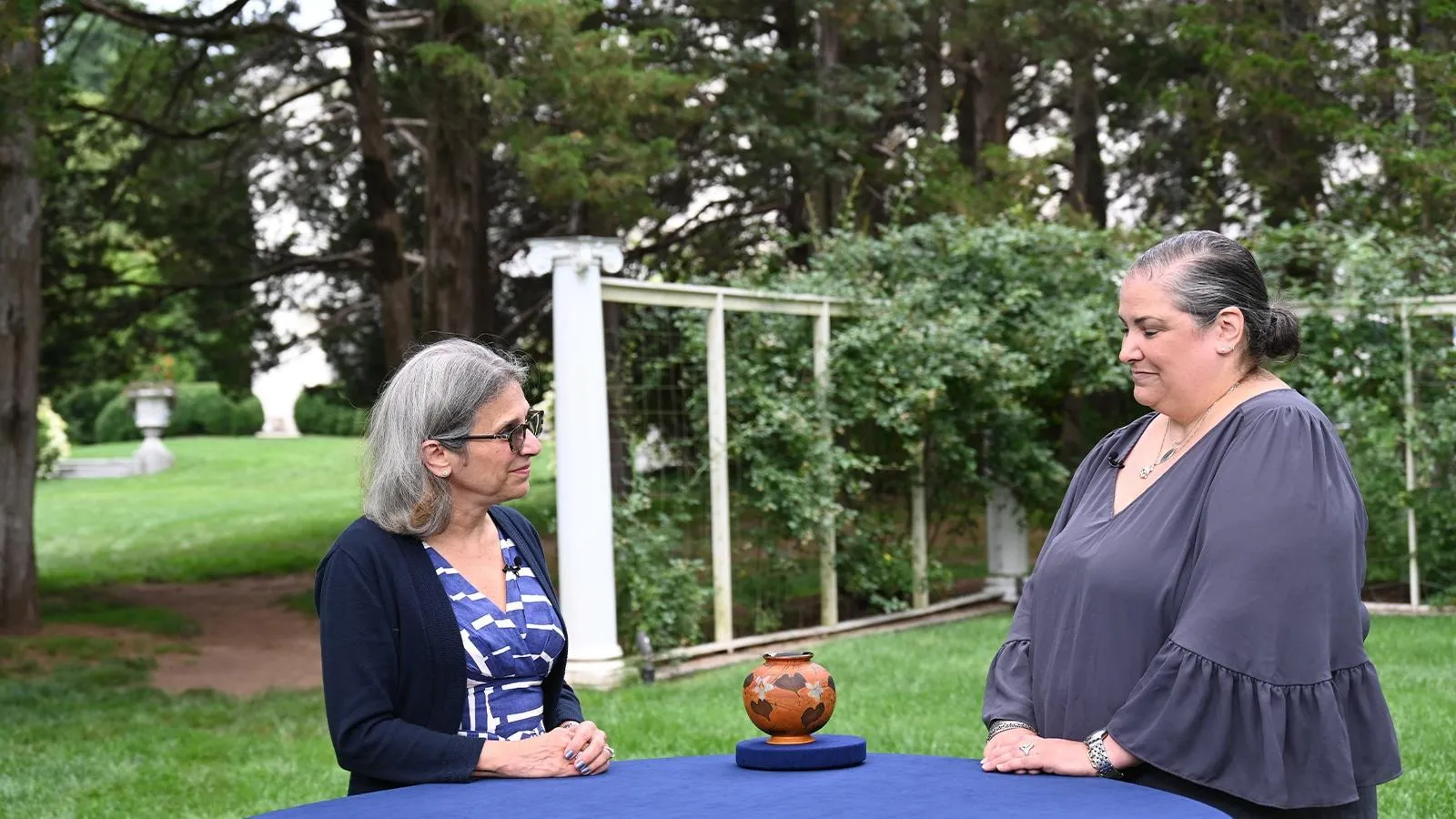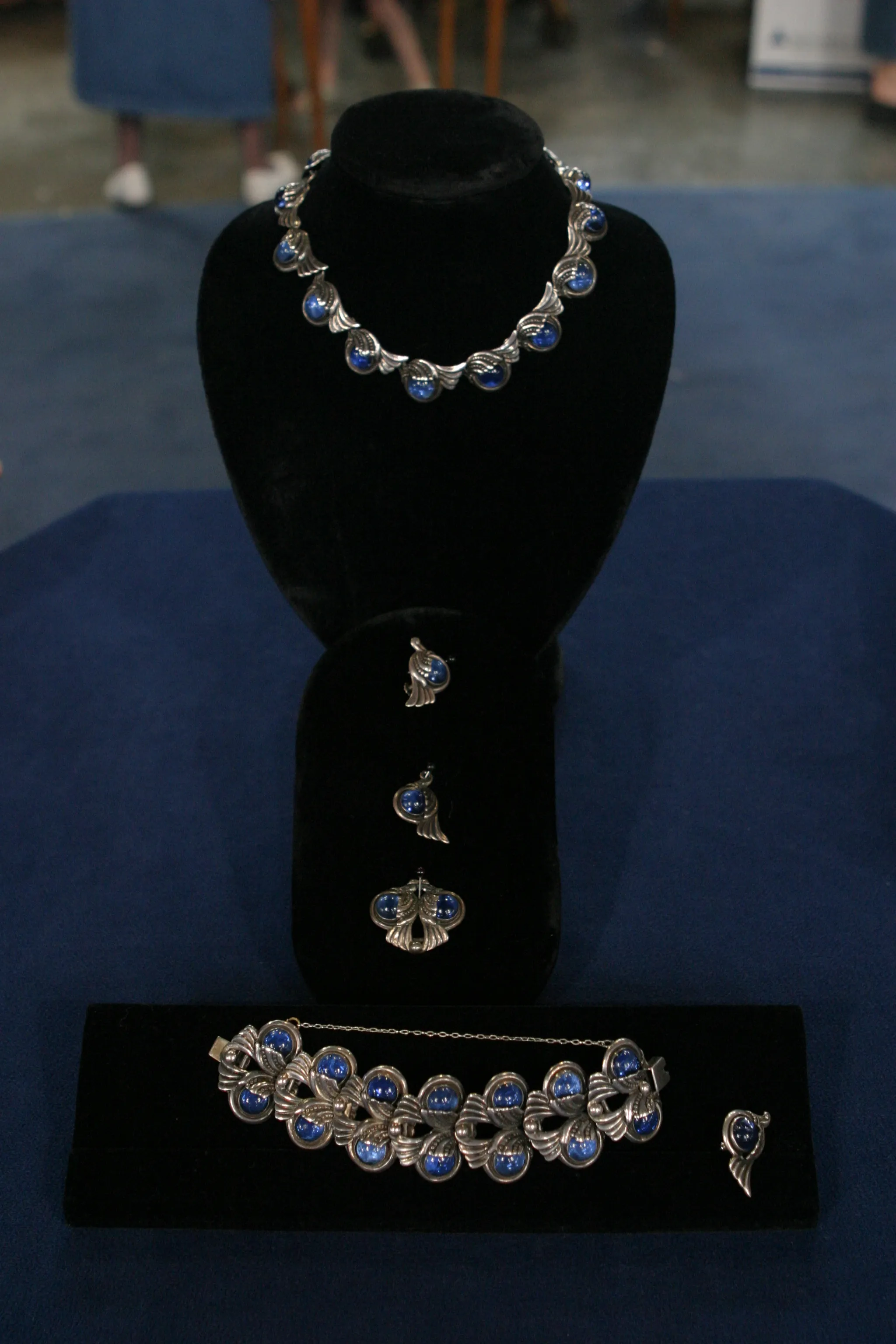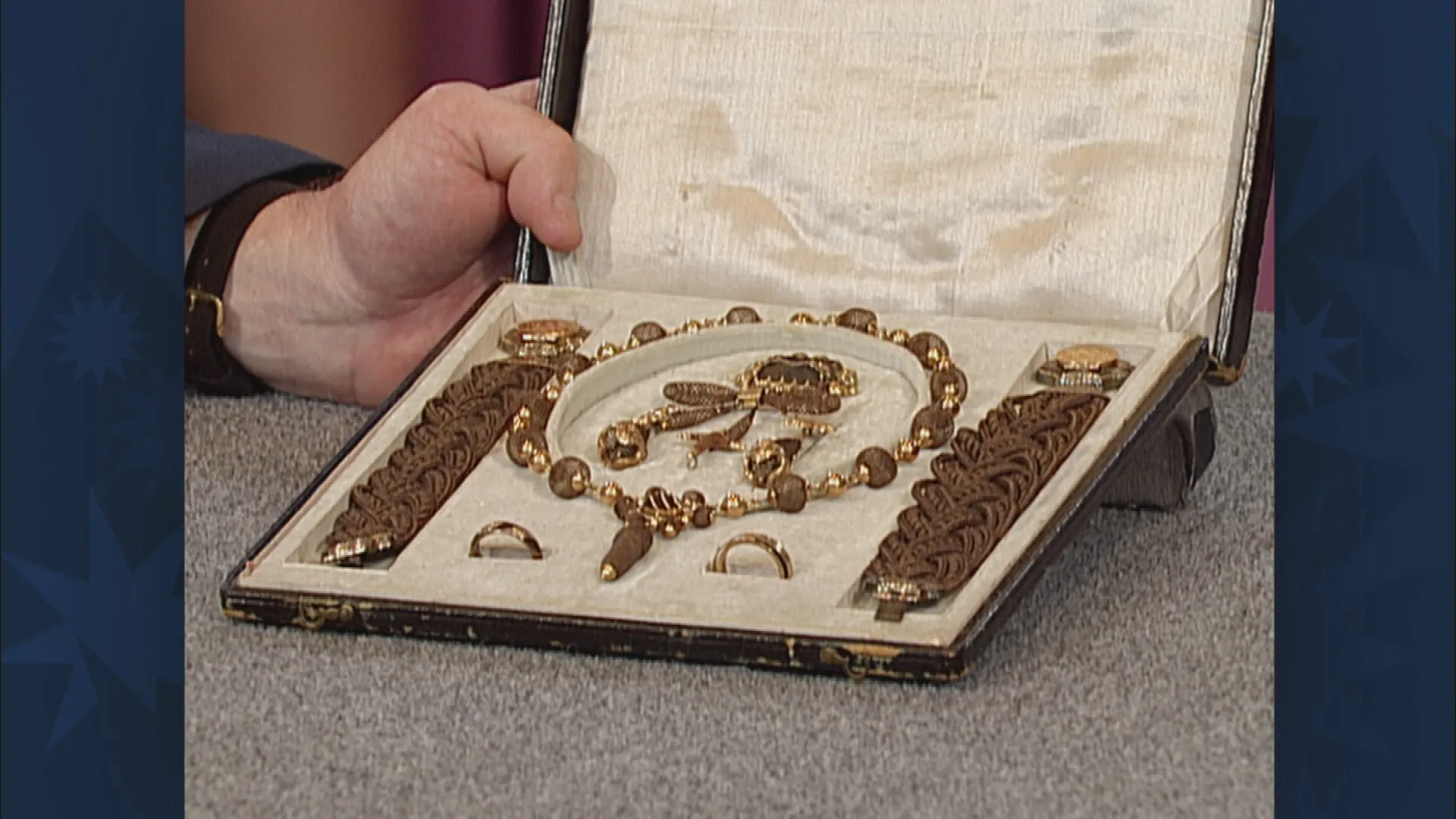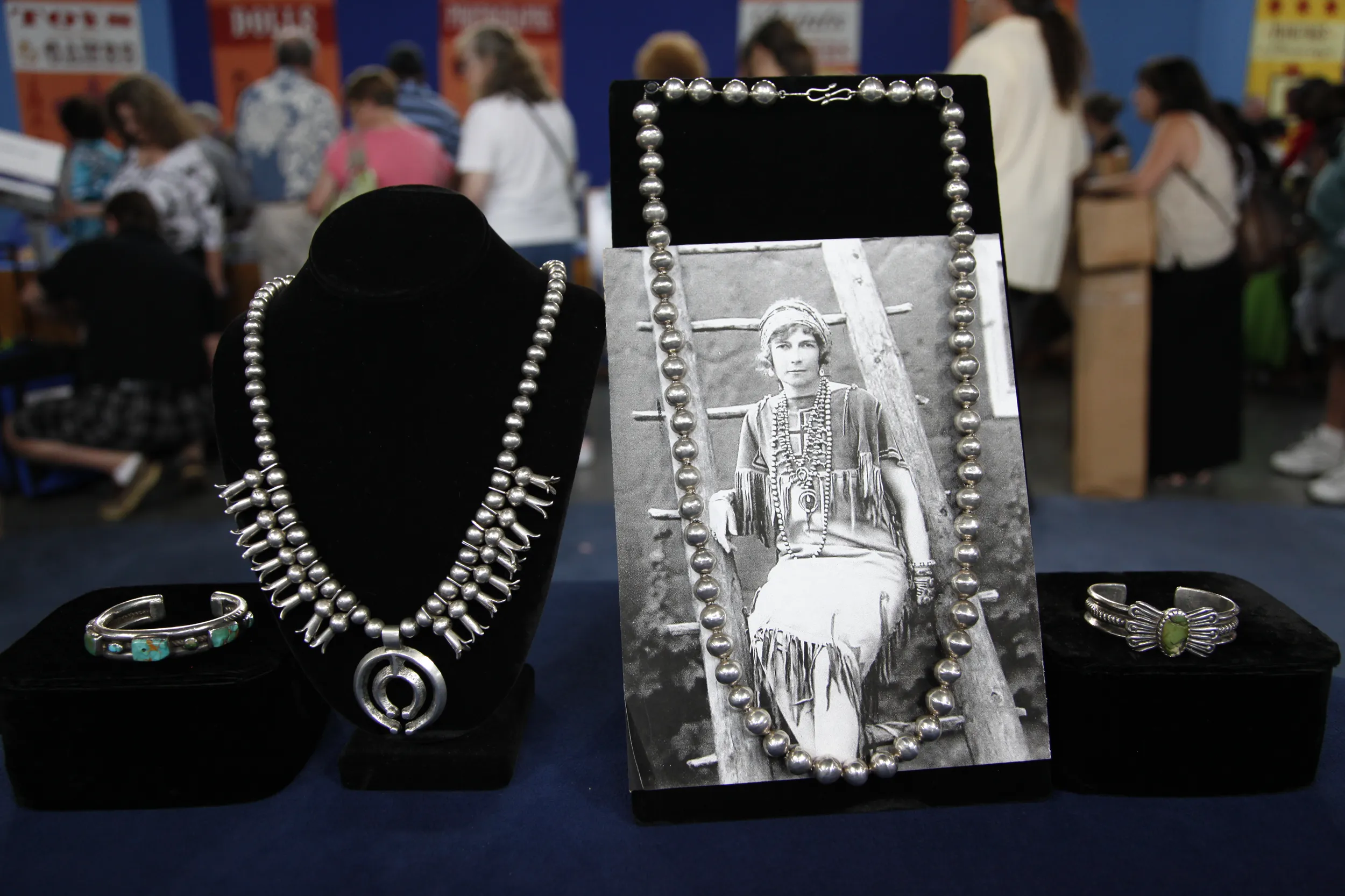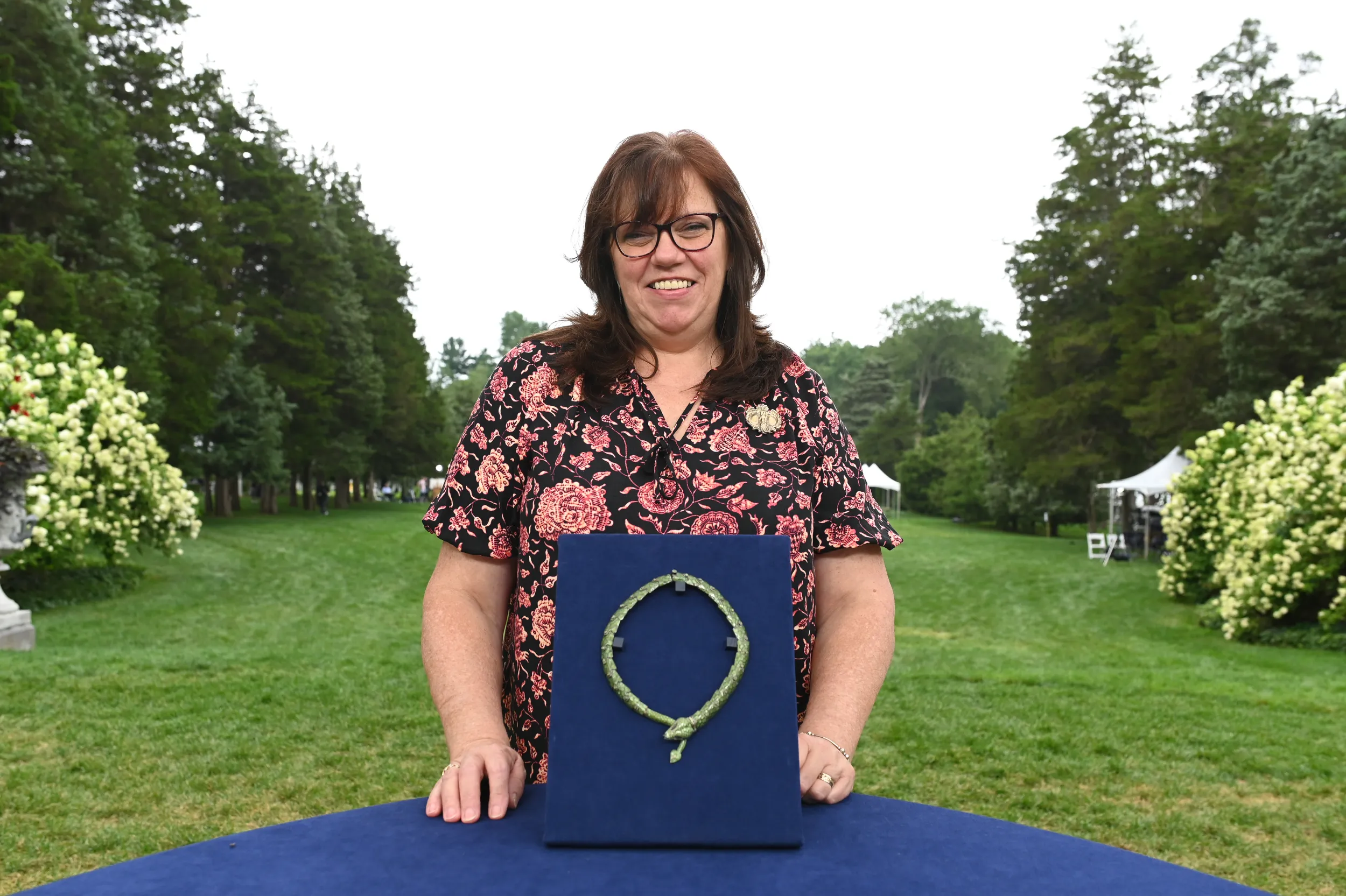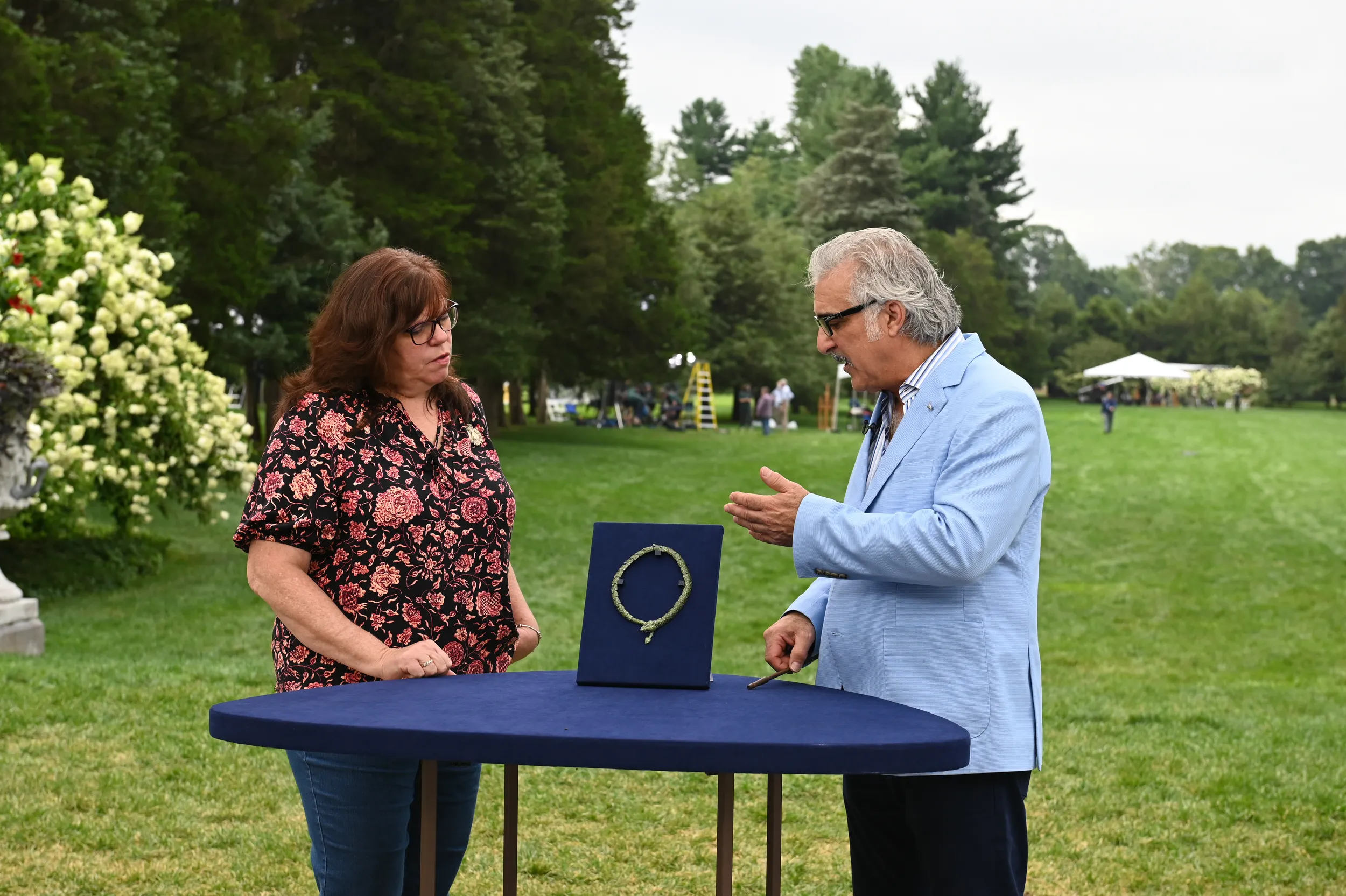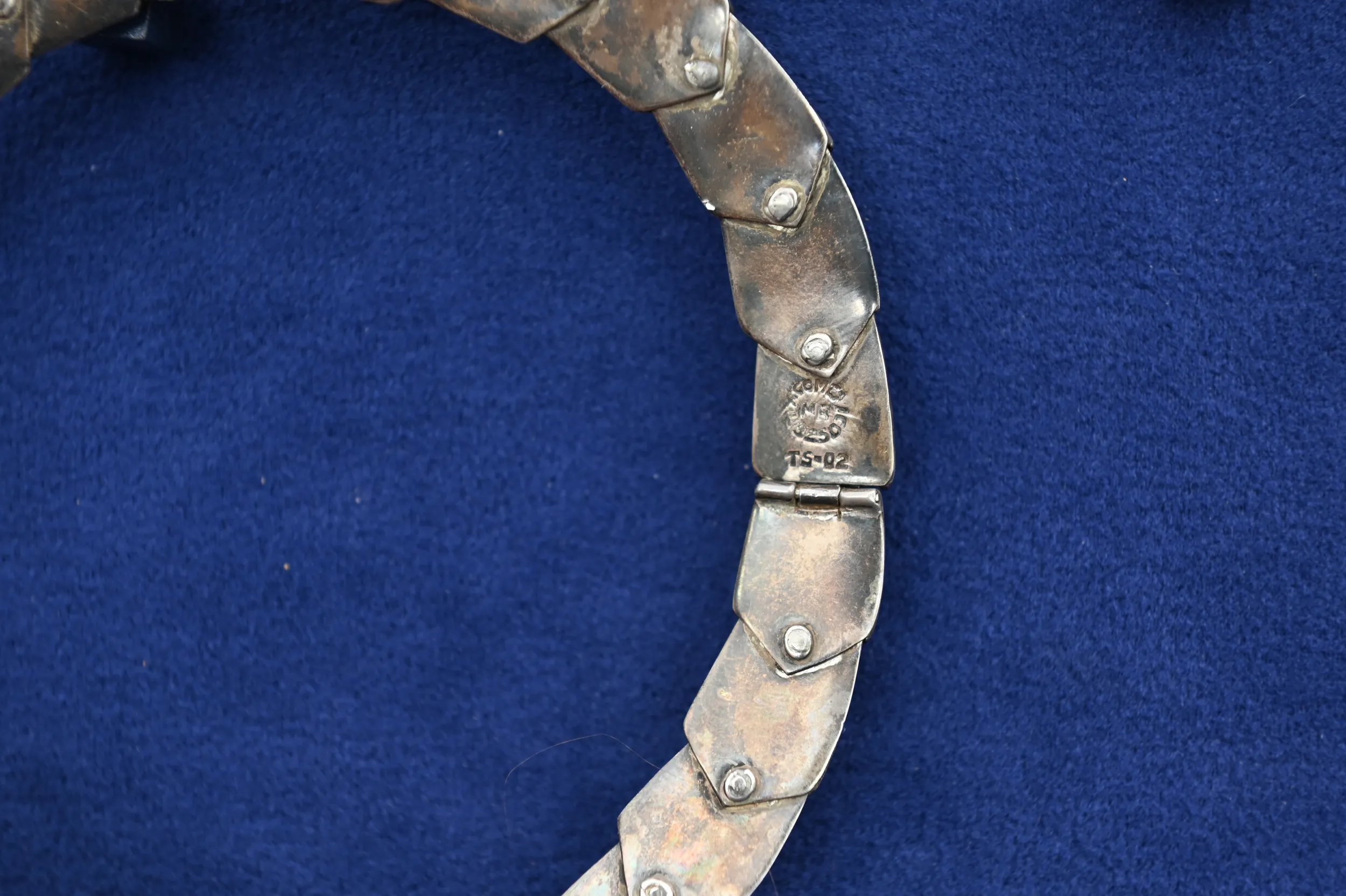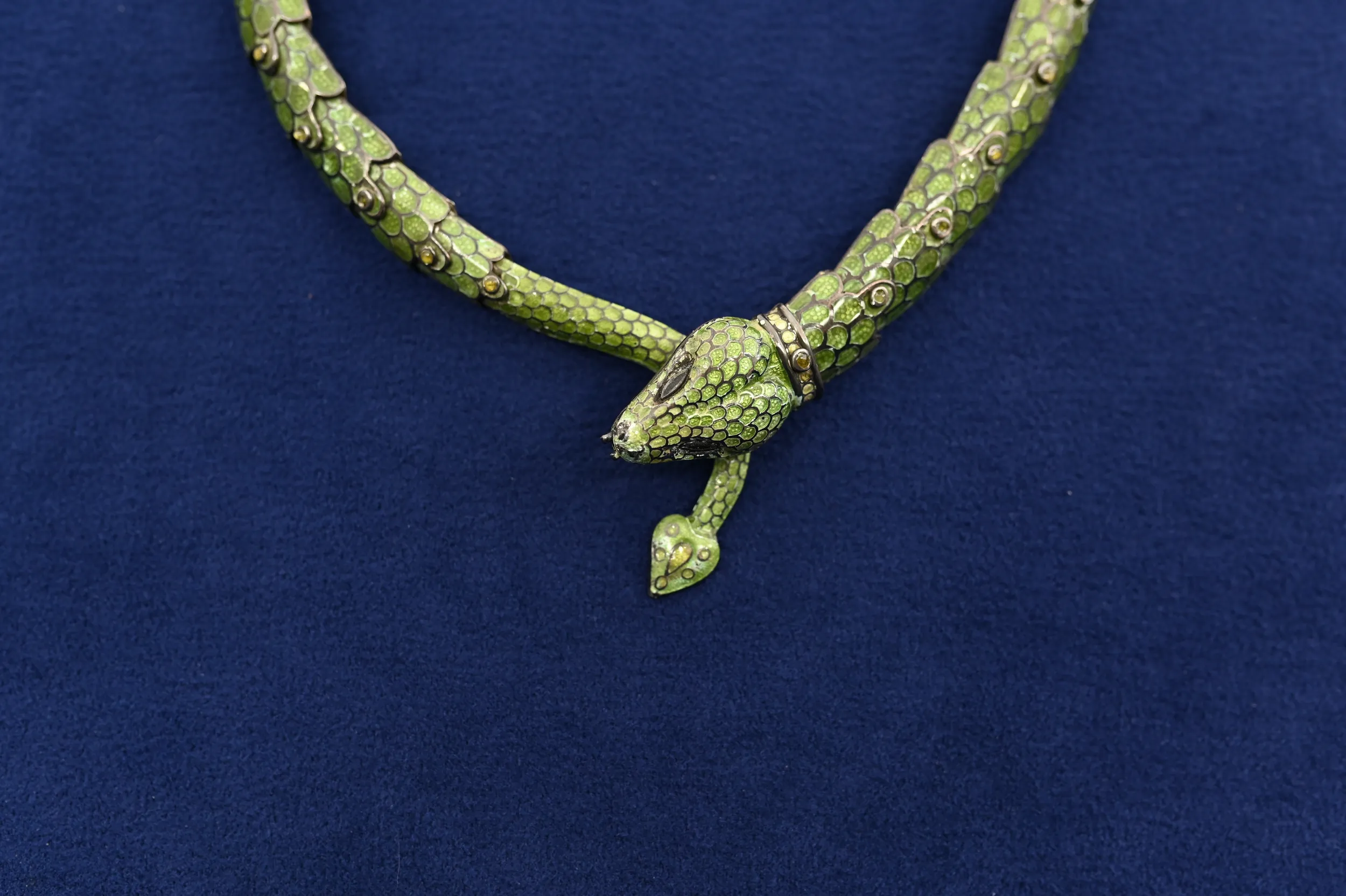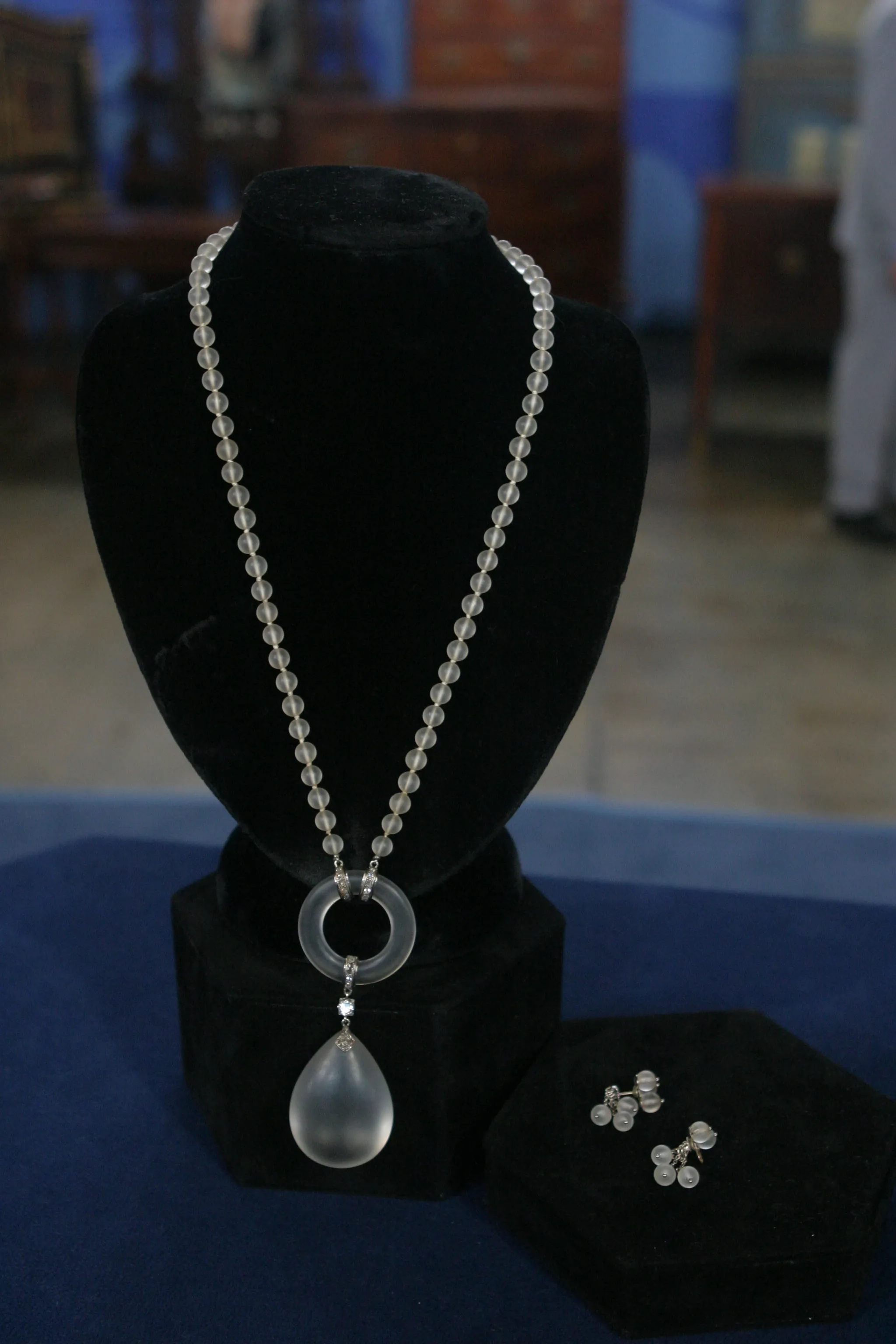GUEST: This was my aunt's. She recently passed away, and I was helping my cousin go through some of her belongings, and she had seen this and said, "I thought immediately of you. Because it's just an oddity, and I know your jewelry, you like oddities."
APPRAISER: No research?
GUEST: I did a little bit, and it wasn't quite clear. You know, you look on the internet and you get six different answers. One said that it was a Mexican artisan, I believe, but I don't know if it's right.
APPRAISER: Interesting, Mexican.
GUEST: Yeah.
APPRAISER: You're right about that.
GUEST: Ooh!
APPRAISER: But um it's not made by a Mexican.
GUEST: Okay.
APPRAISER: The, th….And it's not made by a "craftsman" per se. It's a craftswoman.
GUEST: Ooh!
APPRAISER: Born in San Francisco. Her name's Margot van Voorhies Carr. Her father dies young, she survives the earthquake in San Francisco in 1906.
GUEST: Oh, wow.
APPRAISER: Her mother is brutally murdered.
GUEST: Hm.
APPRAISER: And then she goes through a divorce.
GUEST: Hm, trifecta.
APPRAISER: So she gets out of Dodge, as they say, and she heads down to Mexico for a vacation. She meets this young fella, Don Antonio Castillo, who just happens to be a silversmith.
GUEST: Ah.
APPRAISER: And he talks her into going down to Taxco. Taxco is the hub of silver jewelry manufacturers in Mexico. She goes down there, and she ends up working with him, and she becomes the top designer. Ten years after she meets him...
GUEST: Mm-hmm.
APPRAISER: ...so now it's 1948, she divorces him. She decides to open her own workshop, and she becomes Margot de Taxco. She employs 24 silversmiths. Interesting enough, they're all men.
GUEST: Hm!
APPRAISER: But she has 12 women doing nothing but this type of enamel. She liked to make suites. This would have had a pair of matching earrings, it would have had a bracelet.
GUEST: Okay.
APPRAISER: The earrings would have been the snakeheads.
GUEST: Oh, my God. (chuckles)
APPRAISER: Yeah. You said you liked stuff...
GUEST: Friday the 13th.
APPRAISER: (chuckles) They put the enamel on almost like a watercolor, with a paintbrush, and then it's put into the kiln, in the oven, and that's where it gets hard, like glass. So the patterns you see underneath the enamel.
GUEST: Mm-hm?
APPRAISER: These little dots?
GUEST: Yes.
APPRAISER: That's all done in the Metal when they stamped out the pieces. It lays on the necks fabulously.
GUEST: Mm-hmm.
APPRAISER: So you'll see there's rivets behind each one, and it's articulated.
GUEST: Yes.
APPRAISER: It moves.
GUEST: Mm-hmm.
APPRAISER: Like a snake should.
GUEST: Right.
APPRAISER: But this lets it lay on the neck not only right this way—you see how you get that curve going over the shoulder? Unfortunately, in the '70s, financial reasons, health, she actually closes the shop, but she was in business that long. This was her signature piece. In an auction today, I would say $1,500 to $2,000.
GUEST: Oh, really! Very nice.
APPRAISER: Retail could be $2,500.
GUEST: Okay.
APPRAISER: Have you worn it?
GUEST: Yes, I wore it once. It fits wonderfully, it's an amazing piece to wear. People look at you, it's a little strange!
APPRAISER: (laughs)
GUEST: But it's an amazing piece to wear.
APPRAISER: It is amazing, it's, it's beautiful.
